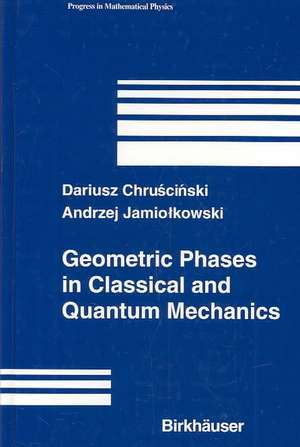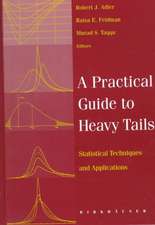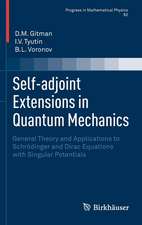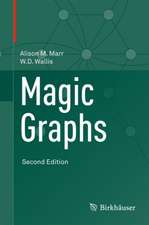Geometric Phases in Classical and Quantum Mechanics: Progress in Mathematical Physics, cartea 36
Autor Dariusz Chruscinski, Andrzej Jamiolkowskien Limba Engleză Hardback – 15 iun 2004
| Toate formatele și edițiile | Preț | Express |
|---|---|---|
| Paperback (1) | 530.42 lei 6-8 săpt. | |
| Birkhäuser Boston – 8 dec 2012 | 530.42 lei 6-8 săpt. | |
| Hardback (1) | 704.69 lei 6-8 săpt. | |
| Birkhäuser Boston – 15 iun 2004 | 704.69 lei 6-8 săpt. |
Din seria Progress in Mathematical Physics
-
 Preț: 377.18 lei
Preț: 377.18 lei -
 Preț: 398.92 lei
Preț: 398.92 lei -
 Preț: 395.25 lei
Preț: 395.25 lei -
 Preț: 391.02 lei
Preț: 391.02 lei -
 Preț: 396.62 lei
Preț: 396.62 lei -
 Preț: 396.62 lei
Preț: 396.62 lei - 20%
 Preț: 481.48 lei
Preț: 481.48 lei -
 Preț: 399.29 lei
Preț: 399.29 lei -
 Preț: 391.02 lei
Preț: 391.02 lei -
 Preț: 381.98 lei
Preț: 381.98 lei - 18%
 Preț: 1239.85 lei
Preț: 1239.85 lei - 18%
 Preț: 1118.93 lei
Preț: 1118.93 lei - 15%
 Preț: 649.87 lei
Preț: 649.87 lei - 15%
 Preț: 575.10 lei
Preț: 575.10 lei - 18%
 Preț: 786.18 lei
Preț: 786.18 lei - 15%
 Preț: 656.10 lei
Preț: 656.10 lei -
 Preț: 395.25 lei
Preț: 395.25 lei -
 Preț: 382.18 lei
Preț: 382.18 lei - 15%
 Preț: 648.56 lei
Preț: 648.56 lei - 15%
 Preț: 649.06 lei
Preț: 649.06 lei - 15%
 Preț: 645.60 lei
Preț: 645.60 lei -
 Preț: 392.21 lei
Preț: 392.21 lei - 15%
 Preț: 595.86 lei
Preț: 595.86 lei -
 Preț: 409.13 lei
Preț: 409.13 lei - 15%
 Preț: 690.62 lei
Preț: 690.62 lei - 15%
 Preț: 654.43 lei
Preț: 654.43 lei - 15%
 Preț: 646.30 lei
Preț: 646.30 lei -
 Preț: 398.35 lei
Preț: 398.35 lei -
 Preț: 402.76 lei
Preț: 402.76 lei - 15%
 Preț: 588.50 lei
Preț: 588.50 lei -
 Preț: 388.72 lei
Preț: 388.72 lei - 18%
 Preț: 781.62 lei
Preț: 781.62 lei -
 Preț: 408.16 lei
Preț: 408.16 lei -
 Preț: 391.79 lei
Preț: 391.79 lei
Preț: 704.69 lei
Preț vechi: 829.04 lei
-15% Nou
Puncte Express: 1057
Preț estimativ în valută:
134.84€ • 140.78$ • 111.60£
134.84€ • 140.78$ • 111.60£
Carte tipărită la comandă
Livrare economică 05-19 aprilie
Preluare comenzi: 021 569.72.76
Specificații
ISBN-13: 9780817642822
ISBN-10: 081764282X
Pagini: 337
Ilustrații: XIII, 337 p.
Dimensiuni: 155 x 235 x 18 mm
Greutate: 0.64 kg
Ediția:2004
Editura: Birkhäuser Boston
Colecția Birkhäuser
Seria Progress in Mathematical Physics
Locul publicării:Boston, MA, United States
ISBN-10: 081764282X
Pagini: 337
Ilustrații: XIII, 337 p.
Dimensiuni: 155 x 235 x 18 mm
Greutate: 0.64 kg
Ediția:2004
Editura: Birkhäuser Boston
Colecția Birkhäuser
Seria Progress in Mathematical Physics
Locul publicării:Boston, MA, United States
Public țintă
ResearchCuprins
1 Mathematical Background.- 2 Adiabatic Phases in Quantum Mechanics.- 3 Adiabatic Phases in Classical Mechanics.- 4 Geometric Approach to Classical Phases.- 5 Geometry of Quantum Evolution.- 6 Geometric Phases in Action.- A Classical Matrix Lie Groups and Algebras.- B Quaternions.
Recenzii
"This monograph is the most recent addition to the body of book length surveys on the topic of geometric phases and physics addressed primarily to physicists...the present title is a most welcome and useful addition. The entire text is very clearly written, well-organized, and generously interspersed with examples (both mathematical and physical) illustrating the abstract formulations. The writing style is efficiently pedagogical and concise, with just the right amount of detail to avoid confusion and repetition in what is after all a very complex, intricate and difficult topic." ---Mathematical Reviews
"The book under review provides a unified treatment of geometric phases in quantum and classical mechanics, which is mainly based on fiber bundle theory...[T]his is a nice and well-written book about an interesting subject. It can be recommended to students and researchers in mathematics and theoretical physics with interests in geometric structures of theoretical physics and with sufficient knowledge about differential geometry." ---Zentralblatt MATH
"The book forms a compact, yet comprehensive, introduction to the mathematical physics of this young field.... Its large bibliography should serve as a quick reference to the relevant literature. Mathematical appendices have been thoughtfully provided for students. Suggested references for further reading and illustrative exercises listed at the end of each chapter are useful to gain a better understanding of the respective topic.... All in all, this is a good textbook ushering the graduate student through the wonderland of geometric phase and whetting up the appetite for further exploration."
—Current Science
"This new textbook examines one of the most interesting findings of the last several decades–the physical importance of the topological and geometrical phases in classical and quantum mechanics.... The number of researchpublications on this topic has grown at such a pace that, for non-experts, it has become difficult to follow the numerous theoretical ideas and experimental proposals that have been presented.... What distinguishes the present book...is that it treats both the quantum and classical geometric phases from a unified (fibre bundle connection) point of view at an advanced textbook level....
Every chapter contains illustrative problems and an annotated list of references for further reading.... The book is well written and...the choice of topics presented and their mathematical description and physical explanation are well balanced and appropriate. The book is aimed mainly at graduate students in mathematics and theoretical physics. It would, however, also be useful to (young and mature) researchers in different fields of theoretical physics and chemistry who want to familiarize themselves with modern differential geometry methods and techniques, and to mathematicians who wish to learn about a class of applications of the above methods in classical and quantum theory."
—Journal of Geometry and Symmetry in Physics
"The book under review provides a unified treatment of geometric phases in quantum and classical mechanics, which is mainly based on fiber bundle theory...[T]his is a nice and well-written book about an interesting subject. It can be recommended to students and researchers in mathematics and theoretical physics with interests in geometric structures of theoretical physics and with sufficient knowledge about differential geometry." ---Zentralblatt MATH
"The book forms a compact, yet comprehensive, introduction to the mathematical physics of this young field.... Its large bibliography should serve as a quick reference to the relevant literature. Mathematical appendices have been thoughtfully provided for students. Suggested references for further reading and illustrative exercises listed at the end of each chapter are useful to gain a better understanding of the respective topic.... All in all, this is a good textbook ushering the graduate student through the wonderland of geometric phase and whetting up the appetite for further exploration."
—Current Science
"This new textbook examines one of the most interesting findings of the last several decades–the physical importance of the topological and geometrical phases in classical and quantum mechanics.... The number of researchpublications on this topic has grown at such a pace that, for non-experts, it has become difficult to follow the numerous theoretical ideas and experimental proposals that have been presented.... What distinguishes the present book...is that it treats both the quantum and classical geometric phases from a unified (fibre bundle connection) point of view at an advanced textbook level....
Every chapter contains illustrative problems and an annotated list of references for further reading.... The book is well written and...the choice of topics presented and their mathematical description and physical explanation are well balanced and appropriate. The book is aimed mainly at graduate students in mathematics and theoretical physics. It would, however, also be useful to (young and mature) researchers in different fields of theoretical physics and chemistry who want to familiarize themselves with modern differential geometry methods and techniques, and to mathematicians who wish to learn about a class of applications of the above methods in classical and quantum theory."
—Journal of Geometry and Symmetry in Physics
Textul de pe ultima copertă
This work examines the beautiful and important physical concept known as the 'geometric phase,' bringing together different physical phenomena under a unified mathematical and physical scheme.
Several well-established geometric and topological methods underscore the mathematical treatment of the subject, emphasizing a coherent perspective at a rather sophisticated level. What is unique in this text is that both the quantum and classical phases are studied from a geometric point of view, providing valuable insights into their relationship that have not been previously emphasized at the textbook level.
Key Topics and Features:
• Background material presents basic mathematical tools on manifolds and differential forms.
• Topological invariants (Chern classes and homotopy theory) are explained in simple and concrete language, with emphasis on physical applications.
• Berry's adiabatic phase and its generalization are introduced.
• Systematic exposition treats different geometries (e.g., symplectic and metric structures) living on a quantum phase space, in connection with both abelian and nonabelian phases.
• Quantum mechanics is presented as classical Hamiltonian dynamics on a projective Hilbert space.
• Hannay’s classical adiabatic phase and angles are explained.
• Review of Berry and Robbins' revolutionary approach to spin-statistics.
• A chapter on Examples and Applications paves the way for ongoing studies of geometric phases.
• Problems at the end of each chapter.
• Extended bibliography and index.
Graduate students in mathematics with some prior knowledge of quantum mechanics will learn about a class of applications of differential geometry and geometric methods in quantum theory. Physicists and graduatestudents in physics will learn techniques of differential geometry in an applied context.
Several well-established geometric and topological methods underscore the mathematical treatment of the subject, emphasizing a coherent perspective at a rather sophisticated level. What is unique in this text is that both the quantum and classical phases are studied from a geometric point of view, providing valuable insights into their relationship that have not been previously emphasized at the textbook level.
Key Topics and Features:
• Background material presents basic mathematical tools on manifolds and differential forms.
• Topological invariants (Chern classes and homotopy theory) are explained in simple and concrete language, with emphasis on physical applications.
• Berry's adiabatic phase and its generalization are introduced.
• Systematic exposition treats different geometries (e.g., symplectic and metric structures) living on a quantum phase space, in connection with both abelian and nonabelian phases.
• Quantum mechanics is presented as classical Hamiltonian dynamics on a projective Hilbert space.
• Hannay’s classical adiabatic phase and angles are explained.
• Review of Berry and Robbins' revolutionary approach to spin-statistics.
• A chapter on Examples and Applications paves the way for ongoing studies of geometric phases.
• Problems at the end of each chapter.
• Extended bibliography and index.
Graduate students in mathematics with some prior knowledge of quantum mechanics will learn about a class of applications of differential geometry and geometric methods in quantum theory. Physicists and graduatestudents in physics will learn techniques of differential geometry in an applied context.
Caracteristici
Several well-established geometric and topological methods are used in this work Examines geometric phases bringing together different physical phenomena under a unified mathematical scheme Material has not been covered thus far in a textbook Includes supplementary material: sn.pub/extras














